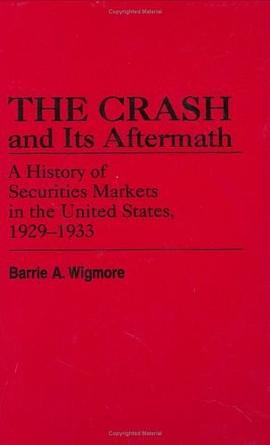

具體描述
This is the first book to focus on the broader structural changes which took place in the financial industry over the full period of decline from the Stock Market Crash in 1929 to the end of President Franklin D. Roosevelt's "One Hundred Days" in 1933. The basis for many of Wigmore's comments is an analysis of 142 leading companies whose stocks constituted approximately 77 percent of the market value of all New York Stock Exchange stocks. Wigmore also examines the various bond markets and relates the money market to the bond market, monetary policy, business conditions, and the problems of the banking system. Treating each year from 1929 to 1933 separately, Wigmore shows the interrelation between the stock, bond, and money markets and events in politics, the economy, international trade and finance, and monetary policy. The Statistical Appendix of 41 tables consolidates financial statistics which have hitherto been widely dispersed, permitting in-depth study.
著者簡介
Barrie Wigmore is a Limited Partner of Goldman Sachs who was active in some of the largest financings and mergers of the 1980s. He has previously written on the stock and junk bond markets of the 1980s and financial markets in the Great Depression.
圖書目錄
讀後感
評分
評分
評分
評分
用戶評價
相關圖書
本站所有內容均為互聯網搜索引擎提供的公開搜索信息,本站不存儲任何數據與內容,任何內容與數據均與本站無關,如有需要請聯繫相關搜索引擎包括但不限於百度,google,bing,sogou 等
© 2025 book.quotespace.org All Rights Reserved. 小美書屋 版权所有




















